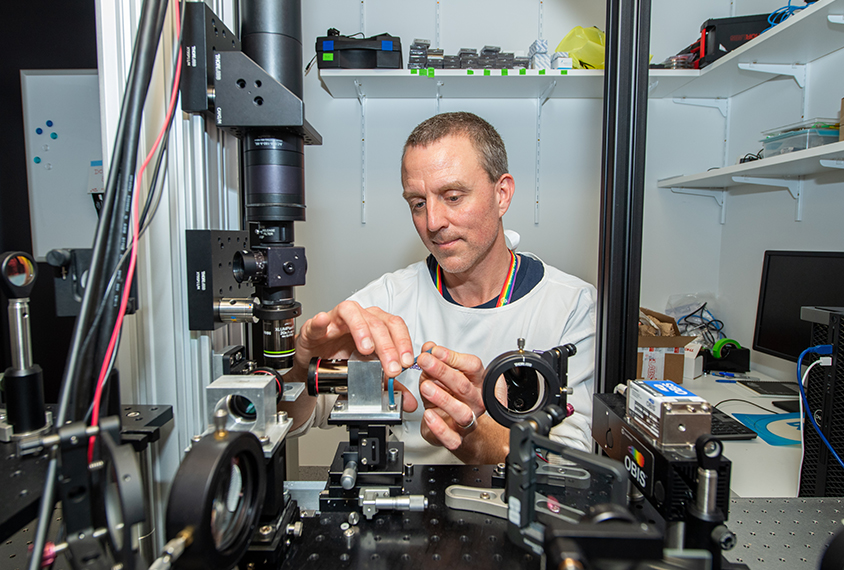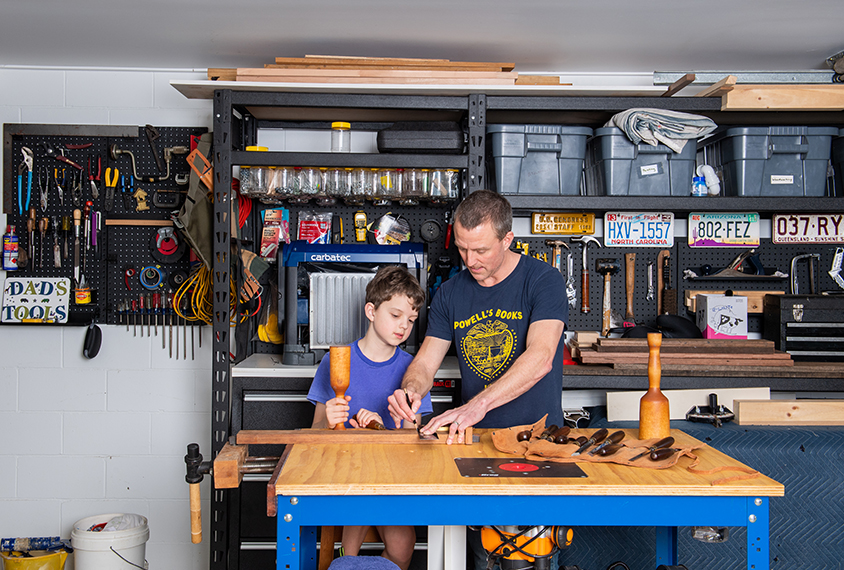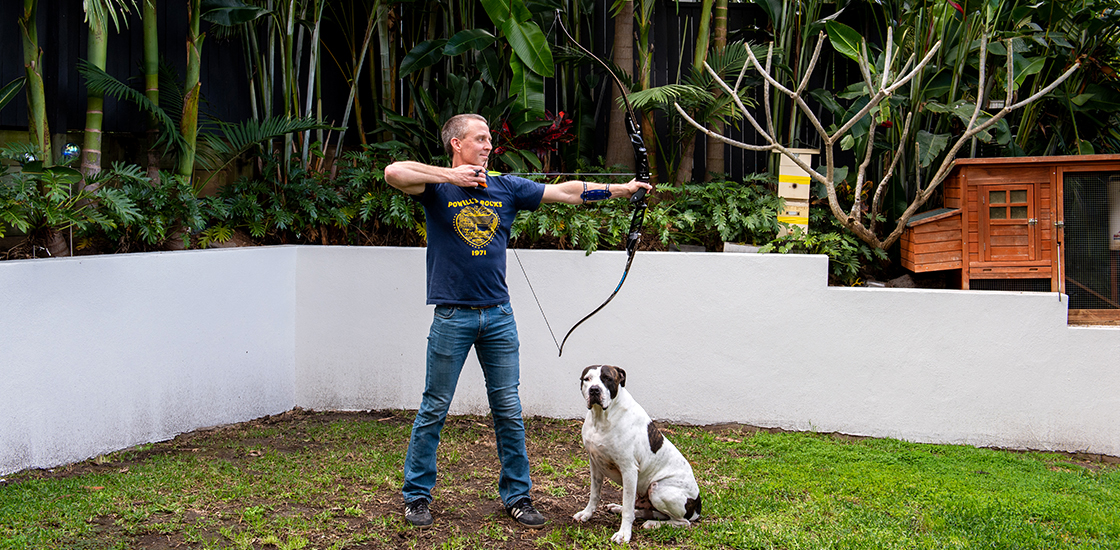The scientists in Ethan Scott’s lab at the Queensland Brain Institute in Brisbane, Australia, hail from a dozen different countries, including North Macedonia, Tahiti and the Seychelles Islands. Their specialties are equally diverse, spanning the fields of genetics, mathematics, computer science and optical physics. Together, the team spins what Scott calls a “web of expertise” for understanding sensory issues of the type that autistic people often have.
“We’ve been really lucky in the people we have attracted,” says Scott, associate professor of neuroscience at the University of Queensland. Scott is a transplant himself: He grew up in Newark, Delaware.
The focus of Scott’s work is the zebrafish, a transparent tropical fish native to South Asia, whose brain can be observed in action to a degree not possible with any other vertebrate — with the right tools, that is. His team uses zebrafish autism models to investigate how sensory brain circuits may differ in people with autism. In pursuit of the zebrafish’s neural secrets, Scott is willing to foray into unfamiliar disciplines, such as physics and mathematics. “I get really excited about getting novel types of results, and often this requires bringing new approaches into play,” he says.
Scott says he is also committed to social diversity and equity, particularly when it comes to gender, and has worked with his university to develop more equitable hiring practices. He told Spectrum about his feminist mother, streaming baseball games in the winter and a trick that makes stationary zebrafish “think” they are spinning.
Spectrum: What big question drives your research?
Ethan Scott: It’s this: How do animals sense and respond to the world around them?
Now comes the fun part, where the “big question” splits into a bunch of smaller ones: How is information from different senses integrated? How does processing change in response to repeated stimuli? How does recent experience, or context, impact sensory processing? How are sensory networks altered in psychiatric disorders?
S: How are you answering those questions?
ES: One of the challenges of studying sensory networks has always been that brain-wide functional imaging — functional magnetic resonance imaging, for instance — doesn’t resolve individual neurons, and targeted approaches like electrophysiology can’t see the whole brain. Neither approach reveals sensory networks for what they are — large, diverse and distributed populations of neurons.
Zebrafish are the only vertebrate model in which whole-brain imaging of individual cells is possible. Their larvae are also small, transparent and develop in the open. We have a system where we can see the entire brain functioning at cellular resolution — tens of thousands of neurons at once.
S: What is that system?
We detect the calcium that is naturally released within active neurons. We do this by expressing fluorescent calcium-binding proteins in zebrafish neurons across the whole brain. The higher the calcium levels in a cell, the more fluorescence we will see, and that’s how we know which neurons are active at any particular time. We detect the fluorescence signal using something called a light-sheet microscope.
Our light-sheet microscopes, which we custom build, provide a thin sheet of tightly focused light that illuminates one plane in the animal’s brain at a time. If we move the light sheet and the focal plane very quickly, we can collect images at different depths in a short period of time. That reveals activity across tens of thousands of neurons, sampled twice a second, across the whole brain.
We track this activity as zebrafish detect and respond to sensory stimuli. Using a variety of mathematical approaches, we then model how information flows through the system, and how this information flow changes in genetic models of autism.

S: This work requires a lot of different kinds of specialized expertise. How did you gather that?
ES: I’ve been very lucky to have great people in my lab who have brought expertise from other fields. For example, Itia Favre-Bulle, a postdoctoral researcher in my lab, is an optical physicist by training. She built our light-sheet microscopes and sculpted light into custom holograms to perform optogenetics — a way to artificially stimulate particular sets of neurons with light — inside the intact zebrafish brain. For her, these were just parts of the physics tool kit, but for us neuroscientists, it was wizardry.
Her coolest trick was to use ‘optical tweezers’ — focused light beams that apply force to the objects they target — on the ear stones of zebrafish larvae to trick the larvae into thinking that they are spinning even when they are stationary. Because the larvae were still, we could put them under our light-sheet microscope and describe the brain-wide vestibular network, which would have been impossible if we had actually been spinning the animal. It was a creative and technical tour de force on her part, and it was a lot of fun to be part of.
S: How does your work help people with autism?
ES: Many people on the spectrum have atypical sensory processing — auditory hypersensitivity, for example, or issues combining information from two senses. We study sensory networks and the ways that the brains of animal models of autism process sensory stimuli differently from control animals.
In 2020, for example, we reported changes in auditory brain networks that seem to underlie auditory hypersensitivity in a zebrafish model of fragile X syndrome. This hints at a potential mechanism for such hypersensitivity in fragile X and autism.
S: How has the pandemic affected your work?
ES: It’s changed my approach to managing a lab. I always try to keep an eye on my people’s well-being, but during COVID-19, it’s been my whole job. I have a lot of international lab members who have been separated from their partners or families, and others who are supposed to join us but are stuck overseas. Our sense of community and mutual support has been essential to staying afloat. It’s reinforced my view that a lab has to be a positive community first and a scientific team after that.
S: You are active around the issues of equity and diversity. What do you do, and why?
ES: I’ve worked across my university and with the Australasian Neuroscience Society on equity and diversity issues, especially focusing on gender equity. My particular niche has been in job searches, interviews and hiring, which are rife with practices designed by and for white guys.
My mother is a retired professor and a powerful feminist, and I think I just grew up expecting women to be successful and in positions of leadership. Growing up in this setting was good for my image of women but may have left me naive to how deep and pervasive society’s inequities are. Starting my own lab and mentoring women — and working alongside female colleagues who have struggled with institutional biases — has made it clear to me how far we have to go, both institutionally and culturally. Raising two boys has also been eye-opening in terms of the gendered pressures and expectations that society applies to kids.
S: You grew up in the United States, so how did you end up in Australia?
ES: My postdoc was in San Francisco, California, and my partner’s was in Santa Barbara, California, and this arrangement got pretty old after a couple of years. She got a great offer as a lab head here, and they came up with a lab head position for me, too. With two tenure-track offers from a good university in a nice place, the Pacific Ocean seemed like a pretty small obstacle.
S: What does a typical day look like for you?
ES: Generally, I walk my boys, ages 8 and 11, to school and ride my bike to work from there. When I’m not teaching or in meetings, I am either hiding in my office writing grants or manuscripts, or I’m poking around the lab talking to the team. Like a lot of scientists, I live for the moment when new data have dropped and we can make our first tentative interpretations, so I’m poring through fresh data with my lab members whenever possible.
About once a week, I work from home, and that’s good if I want to focus on something without interruption. My dog loves the company, too. The evening brings cooking, dinner with the family and bedtime stories for the boys.
S: What do you listen to while you work?
ES: If I’m doing anything that requires focus, I can’t handle music with lyrics or a big dynamic range, so maybe just some early choral music or solo piano, or more often, just quiet. If work is light and the timing is right, I’ll stream the radio broadcast of a San Francisco Giants game. They’re on in the middle of the day during the winter in Australia, which is pretty weird, but I’ve gotten used to it.
S: What do you do for fun?
ES: Fun usually means finding ways to unwind as a family. We’ve taken up archery, and we go once or twice a week together to shoot. I’ve also enjoyed woodworking as a hobby ever since I took night classes in woodworking at San Francisco City College as a postdoc. The boys are reaching an age where I can bring them in on furniture-making projects, and that’s great quality time.
Beyond that, we get outside whenever we can. We love to take the whole crew walking on the beach or hiking in the rainforest. We’re three-season campers, but not in the way that North Americans would expect; it’s beautiful in the winter here, but too hot in the summer.
S: How many unread emails are in your inbox right now?
ES: Zero! Unread emails make me anxious.






